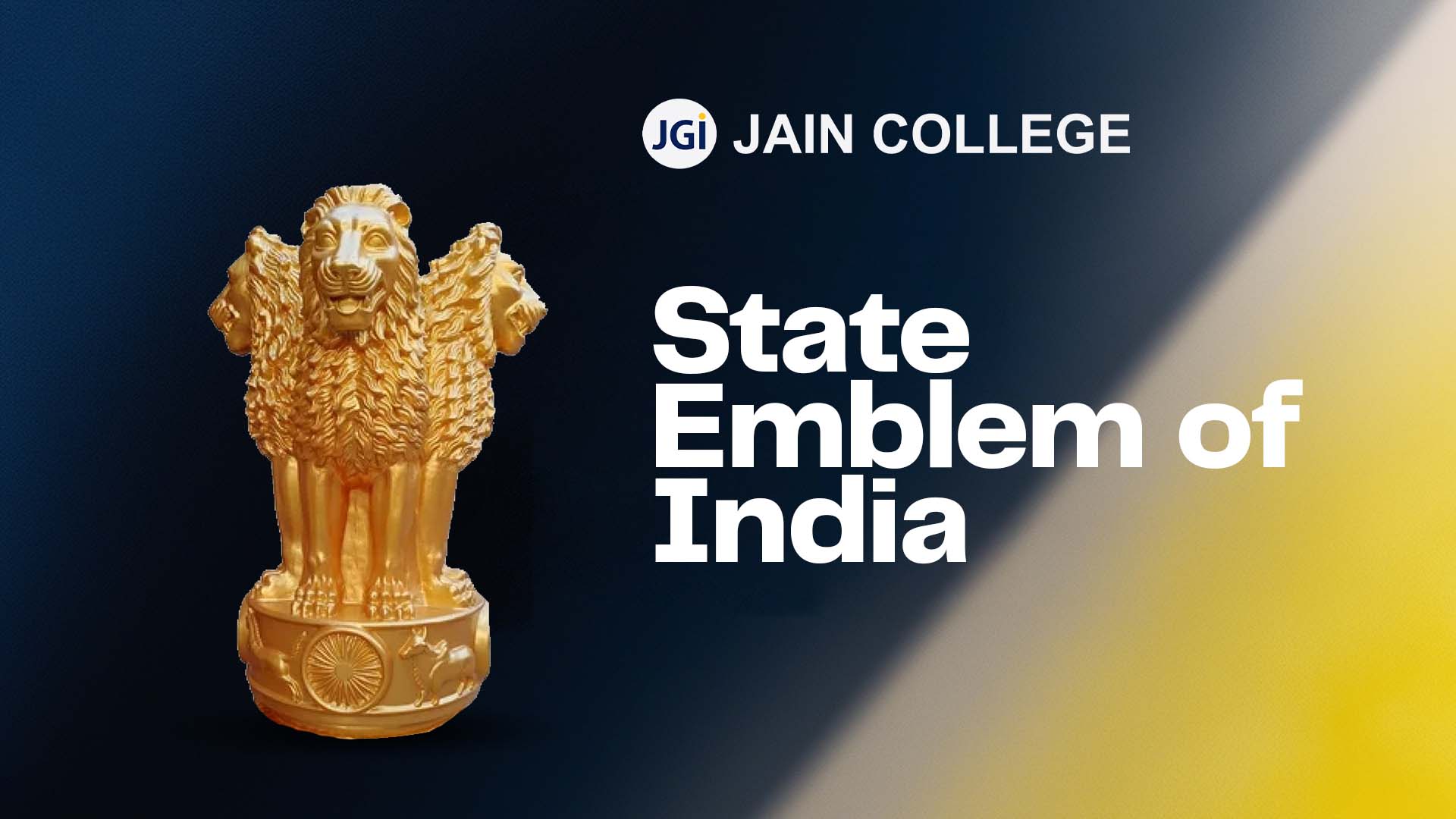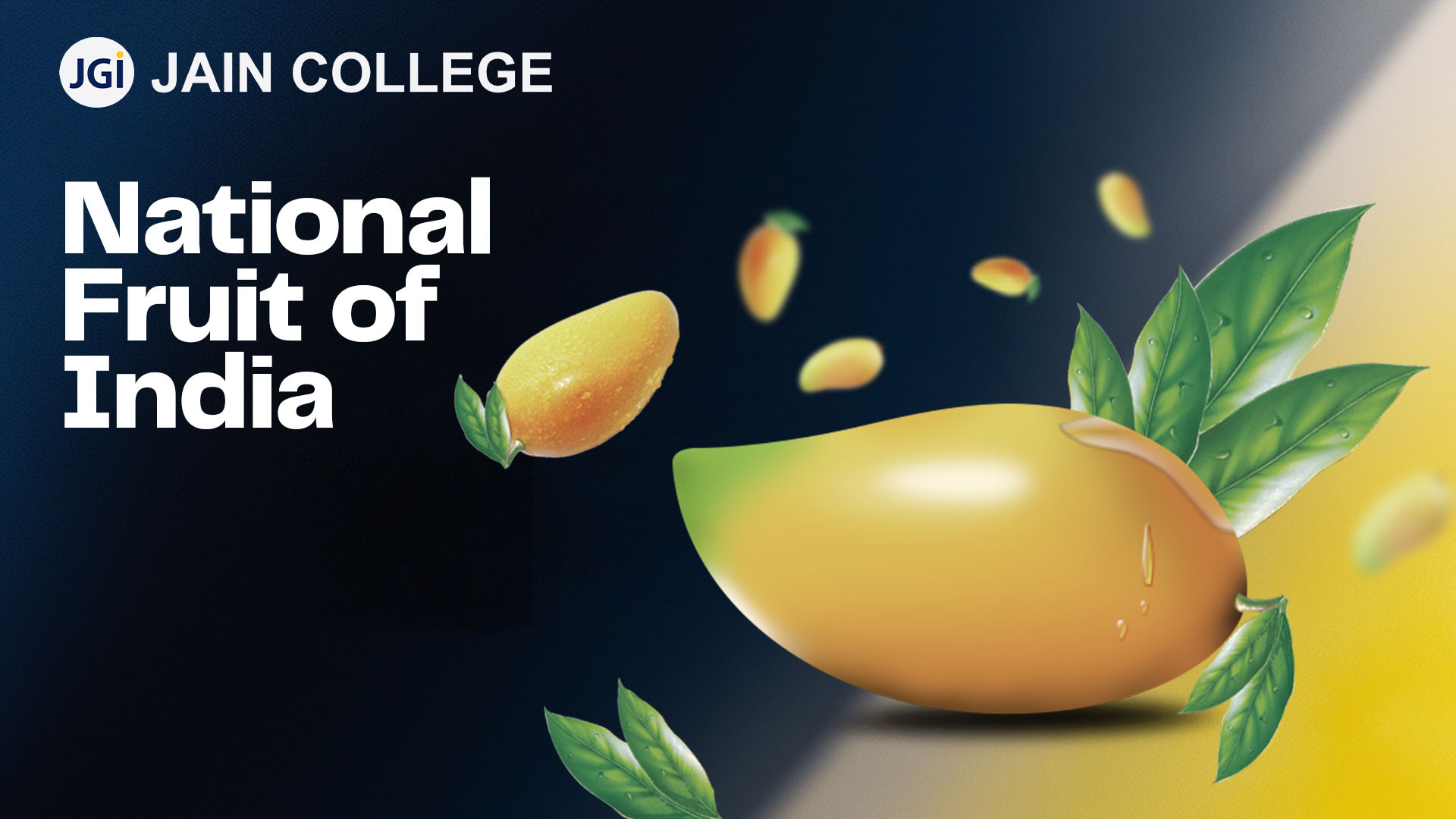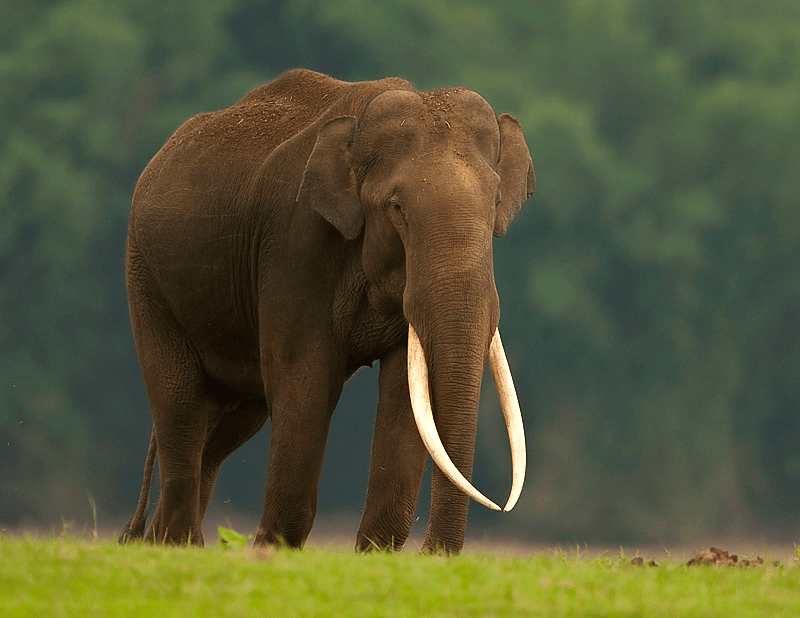
National Symbols of India represent the country's rich heritage, cultural diversity, and historical legacy. These symbols, including the Tricolour flag, the Bengal tiger, and the lotus flower, serve as powerful emblems of unity and pride. Each symbol carries deep significance, reflecting India's values, traditions, and identity on the global stage.
They symbolise the nation’s strength, culture, and occupation, and serve as a source of inspiration to the country’s people. National symbols serve as a source of national pride and sense of common identity. India’s national symbols provide the association and relatability with the region. We will discuss the national symbols of India in this blog.
Some Lesser Known National Symbols of India

India’s National Anthem is ‘Jana Gana Mana’. It was composed by Rabindranath Tagore in Bengali. On 24th January 1950, the Hindi version was adopted by the Constituent Assembly as the National Anthem. The complete song consists of five stanzas and the first stanza contains the full version of the National Anthem.

The Indian National Song, Vande Mataram is a Sanskrit song composed by Bankimchandra Chattopadhyay as part of his famous novel “Anand Math” (1882). The first president of India, Dr. Rajendra Prasad made a statement in the Constituent Assembly, "the song Vande Mataram, which has played a historic part in the struggle for Indian freedom, shall be honoured equally with Jana Gana Mana and shall have equal status with it."

The Indian National Flag is a tricolour with three horizontal stripes and a navy blue wheel at the centre. The three stripes are coloured- Saffron, white and green. The colour saffron represents strength and courage, white represents peace and truth, and green symbolises prosperity, fertility and growth. The blue wheel is the Ashoka Chakra or Dharma Chakra. The wheel has been adopted from the Ashoka Stambh in Sarnath. The National Flag was adopted by the Indian Constituent Assembly on 22nd July 1947.

The state emblem has been adapted from the Sarnath Lion. The emblem has four lions facing all four directions, mounted on an abacus with a frieze carrying the sculptures in high relief of a bull, an elephant, a lion and a galloping horse. These are separated by intervening wheels over a bell-shaped lotus. The words “Satyamev Jayate” are inscribed at the bottom. The original sculpture has been carved out of a single block of polished sandstone.

India’s national bird is the peacock, Pavo Cristatus. It is a swan-sized blue-coloured bird with a fan-shaped crest of feathers and a long, slender neck. The male species are more colourful than the female, with a glistening blue breast and a bronze-green tail with 200 elongated feathers. The peacock does an elaborate courting dance where the fans out his tail and preen his feathers to attract the peahen’s attention.

The Royal Bengal tiger is India’s national animal. It presents a unique combination of strength, agility, grace and enormous power. The majestic beast is found in all parts of India except the hot deserts regions of West India and Trans-Himalayan region of the North. Once an endangered species threatened by extinction, the number of Royal Bengal tigers has risen to over 3100 as per the last census of 2023. India has 50 tiger reserves across the country that are governed by strict Wildlife Protection Laws.

The banyan tree (Ficus Bengalensis) was declared India's national tree in 1988. It grows across India and represents faith and eternal life. The banyan tree has strong roots and has unique significance in Indian mythology and Hindu religion. The oldest banyan tree in the world is 250 years old and located near Kolkata. It spans an area of 3.5 acres. The banyan tree is called the “Kalpa Vriksha” or the “Tree of Wish Fulfilment”. Throughout India, the banyan tree marks the centre of village life, where the Village council meets or the local people gather to socialise.

Mango was declared as the Indian national fruit in 1950. The fruit grows widely across the country and every region grows varieties of mangoes that are unique to the region. Some famous varieties are Alphonso, Dasheri, Benisha, Totapuri, Baiganpalli, Malda, Kesar etc. Every variety has its unique smell, colour and taste. Mango depicts generosity, richness, and prosperity.

The lotus is India’s national flower. It holds a unique significance in Indian culture and grows in abundance in the water bodies of the country. The lotus flower grows in dirt but isn’t besmirched with stains. It holds prominent symbolism in Asian religions such as Hinduism, Buddhism and Jainism. Lotus figures prominently in ancient Indian art, architecture, and literature.
| Title | National Symbol | Images |
| National Currency | Indian Rupees |  |
| National Calendar | Saka Calendar |  |
| National River | Ganga |  |
| National Reptile | King Cobra |  |
| National Aquatic Animal | Ganges River Dolphin |  |
| National Vegetable | Pumpkin |  |
| National Heritage Animal | Asiatic Elephant |  |
The National symbols of India reflect India’s rich natural and cultural diversity. Every national symbol has special significance to India’s history, shared ideologies, lifestyle practices and interests. They foster pride and patriotism and give us a shared sense of accountability towards preserving the nation’s many gifts.
India’s national symbols are deeply intertwined with its rich traditions, historical events, and cultural diversity. The Tricolour flag, for instance, was a beacon of hope and unity during the independence movement, representing the sacrifices of countless freedom fighters. Similarly, the National Anthem, Jana Gana Mana, highlights the geographical and cultural diversity of the nation, celebrating its unity. Symbols like the Lotus and Banyan Tree reflect India’s ancient traditions, spirituality, and reverence for nature, while the Ganga River embodies both ecological importance and religious significance.
National symbols serve as a unifying force, fostering a shared sense of identity and belonging. They evoke pride in the country’s achievements and its unique heritage. For instance, the Bengal Tiger, as the national animal, symbolizes strength and courage, inspiring citizens to uphold these values. The National Emblem and the motto Satyameva Jayate (Truth Alone Triumphs) remind people of India’s commitment to justice and truth. By connecting citizens to their past and highlighting their collective identity, these symbols play a crucial role in nurturing patriotism and national unity.
National symbols are more than just representations; they are embodiments of a nation’s identity, heritage, and pride. Safeguarding these symbols ensures that their meaning and importance are respected by current and future generations. Proper protection reflects the collective reverence citizens hold for their country’s history, culture, and values.
India has enacted various laws and regulations to ensure the dignity and proper use of national symbols:
Educating citizens, especially the younger generation, about the importance of national symbols is vital for their preservation. Schools and cultural institutions often organize programs, workshops, and celebrations to foster respect and awareness about these symbols and their significance.
Every citizen has a role in protecting national symbols:
In today’s digital age, national symbols can be subject to misuse online, including inappropriate representations on social media. It is crucial to promote responsible behavior and establish stricter measures for digital platforms. Additionally, initiatives like conserving the Ganges River or protecting the Bengal Tiger reflect broader efforts to safeguard the physical and ecological aspects of India’s symbols.
The full national anthem of India is Jana Gana Mana, composed of five stanzas. However, only the first stanza is officially recognized and sung on formal occasions.
The duration of the officially recognized version of Jana Gana Mana is approximately 52 seconds.
The national anthem Jana Gana Mana was written by Rabindranath Tagore, the first Asian Nobel laureate.
Jana Gana Mana: The National Anthem of India, written by Rabindranath Tagore, symbolizes unity and celebrates India's diversity. Vande Mataram: The National Song of India, written by Bankim Chandra Chatterjee, played a significant role during the independence movement.
The official time to sing the Indian National Anthem is 52 seconds.
The national song of India is Vande Mataram, composed by Bankim Chandra Chatterjee.
National Anthem: Jana Gana Mana. National Song: Vande Mataram.
Vande Mataram was written by Bankim Chandra Chatterjee and is part of his novel Anandamath.
The official version of Vande Mataram takes around 65 seconds to sing.
The Indian National Flag is called the Tiranga, meaning "Tricolour."
The national logo of India is the Lion Capital of Ashoka, also known as the State Emblem of India.
The Tiranga is the National Flag of India. It consists of three horizontal stripes: saffron at the top, white in the middle with the Ashoka Chakra, and green at the bottom.
The "Star of India" was a colonial British emblem and is unrelated to the modern Indian flag.
The Lion Capital of Ashoka is the State Emblem of India.
The national emblem of India is the Lion Capital of Ashoka.
The 4-lion logo represents the Lion Capital of Ashoka, adopted as the national emblem of India.
The lion is featured in the State Emblem of India.
India has 17 recognized national symbols, including the Tricolour, National Anthem (Jana Gana Mana), National Song (Vande Mataram), Bengal Tiger, Peacock, and Banyan Tree.
The 17 national symbols of India include: National Flag – The Tricolor (saffron, white, green) with the Ashoka Chakra. National Emblem – Lion Capital of Ashoka. National Anthem – "Jana Gana Mana" by Rabindranath Tagore. National Song – "Vande Mataram" by Bankim Chandra Chattopadhyay. National Flower – Lotus (Nelumbo nucifera). National Tree – Banyan (Ficus benghalensis). National Fruit – Mango (Mangifera indica). National Animal – Bengal Tiger (Panthera tigris tigris). National Bird – Indian Peacock (Pavo cristatus). National Aquatic Animal – Ganges River Dolphin (Platanista gangetica). National Heritage Animal – Indian Elephant (Elephas maximus indicus). National River – The Ganges. National Currency – Indian Rupee (?). National Calendar – Saka Calendar. National Vegetable – Pumpkin (Cucurbita moschata). National Fossil – The Fossil of a Plant (found in the state of Madhya Pradesh). National Sport – Field Hockey.
Jana Gana Mana by Rabindranath Tagore Transliteration: Jana gana mana adhinayak jaya he Bharat bhagya vidhata Punjab Sindh Gujarat Maratha Dravida Utkal Banga Vindhya Himachala Yamuna Ganga Uchchala jaladhi taranga Tava shubha name jage Tava shubha asish maange Gahe tava jayagatha Jana gana mangal dayak jaya he Bharat bhagya vidhata Jaya he jaya he jaya he Jaya jaya jaya jaya he
India's National Song is "Vande Mataram", written by Bankim Chandra Chattopadhyay and composed by Rabindranath Tagore. It was first sung in 1896 and adopted as the national song on January 24, 1950. ande Mataram Sujalam suphalam malayaja sheetalam Shasya shyaamalaam maataram Vande Mataram Shubhra jyotsnaa pulakita yaaminiim Phalata phulla viniim Matribhumiim, matribhumiim, maataram
The state bird varies by state. For example, the Indian Roller (Neelkanth) is the state bird of several Indian states.
The peacock was declared India's national bird in 1963 because it is native to the country and symbolizes the rich cultural heritage and diversity of India. It represents beauty, grace, and elegance, and is also associated with various Indian deities, particularly Lord Krishna. Additionally, the peacock is an integral part of India's folklore, art, and traditions.
The Indian peacock, known for its vibrant plumage and majestic appearance, symbolizes grace, beauty, and pride.
The Indian Peacock is India's national bird. It symbolizes grace, beauty, and vibrancy. It is native to the Indian subcontinent. Male peacocks have colorful feathers. Females are less colorful but equally elegant. Peacocks are often associated with Indian mythology. They are protected under the Wildlife Protection Act. Peacocks dance during monsoons, spreading their feathers. They are revered in Indian art and culture. The peacock was declared the national bird in 1963.
The lion was the first national animal of India, replaced by the Bengal Tiger in 1973.
The lion is no longer the national animal. The Bengal Tiger is the current national animal.
India has multiple national symbols, including the Tricolour, National Anthem, and Lion Capital of Ashoka.
The state animal varies by state. For instance, the Blackbuck is the state animal of Haryana.
The Banyan Tree is the national tree of India.
State trees vary by state. For example, the Mango Tree is the state tree of Maharashtra.
The Banyan Tree is one of the most famous trees in India, symbolizing longevity and immortality.
The Mango is the national fruit, and the Banyan Tree is the national tree.
The Ashoka Tree is considered the state tree of Uttar Pradesh.
The Mango is the national fruit, but there is no officially recognized national vegetable.
National Bird: Indian Peacock. National Flower: Lotus.
National symbols represent a nation’s culture, values, and heritage, fostering unity and pride among its citizens.
The Indian Peacock is the national bird of India
The Indian National Flag has three colors: Saffron (top) symbolizes courage and sacrifice. White (middle) represents peace and truth. Green (bottom) stands for growth and prosperity.
The Ganges River Dolphin is India's national aquatic animal.
The Ganges River Dolphin is also considered India's national aquatic species.
There is no specific "national aquatic fish" in India. However, the Ganges River Dolphin is the official aquatic animal.
The Ganges River Dolphin is the national heritage aquatic animal of India.
The Ganges River Dolphin is India’s national dolphin.
While Field Hockey is traditionally considered India's national sport, India does not officially declare any sport as national.
Field Hockey is often regarded as the national sport of India due to historical success.
No, Kabaddi is not India's national sport. Field Hockey is more commonly recognized as the national sport.
Canada's national sport is Ice Hockey, while India is traditionally associated with Field Hockey.
Yes, National Sports Day in India is celebrated on August 29 in honor of hockey legend Dhyan Chand.
The currency of India is the Indian Rupee (INR), symbolized as ?.
Raghuram Rajan, the former Governor of the Reserve Bank of India, is often referred to as the "father of Indian currency" for introducing significant reforms, including the redesign of the currency notes.
The Rupee is India’s currency due to its historical use in the Indian subcontinent. It originated during the reign of Sher Shah Suri in the 16th century.
India’s currency is the Indian Rupee (INR), symbolized as ?.
India celebrates two national days: Independence Day (August 15) and Republic Day (January 26).
There is no official national day on August 31 in India.
The national holidays in India are Independence Day (August 15), Republic Day (January 26), and Gandhi Jayanti (October 2).
The four civilian awards of India are Bharat Ratna, Padma Vibhushan, Padma Bhushan, and Padma Shri.
The Bharat Ratna is the highest civilian award in India
The three highest civilian awards in India are: Bharat Ratna Padma Vibhushan Padma Bhushan
There is no fixed number of Bharat Ratna awards given each year. It can be awarded to a maximum of three individuals in a year.
The first Bharat Ratna award was given to Dr. Sarvepalli Radhakrishnan, C. Subramaniam, and Dr. Bhagwan Das in 1954.
India has no single national language. However, Hindi (in Devanagari script) is the official language, alongside English for official use.
No, Hindi is not the national language. It is one of the official languages of India.
Hindi is referred to as Rashtriya Bhasha (national language) in India, though it is not the sole national language.
No, Sanskrit is not the national language. It is one of the classical languages of India.
The Ganga (Ganges) is India’s national river.
Each state in India may have its own state river. For example, Mahanadi is the state river of Odisha.
There is no officially recognized "national river of the world." However, the Ganges River is often regarded as a sacred and national river in India.
India has several important rivers, including the Ganges, Yamuna, Indus, Brahmaputra, and Godavari, flowing across different regions of the country.
The Ganges is the longest river in India, spanning about 2,525 kilometers.

JAIN PU College, a part of the renowned JGI Group, is committed to empowering students with quality education.
Beyond academics, the college ensures its online content reflects the same standard of excellence. Every blog and article is meticulously vetted and proofread by subject matter experts to ensure accuracy, relevance, and clarity. From insightful educational topics to engaging discussions, JAIN PU College's content is crafted to inform, inspire, and add value to its readers, reflecting the institution's commitment to intellectual growth and innovation.
View all Blogs